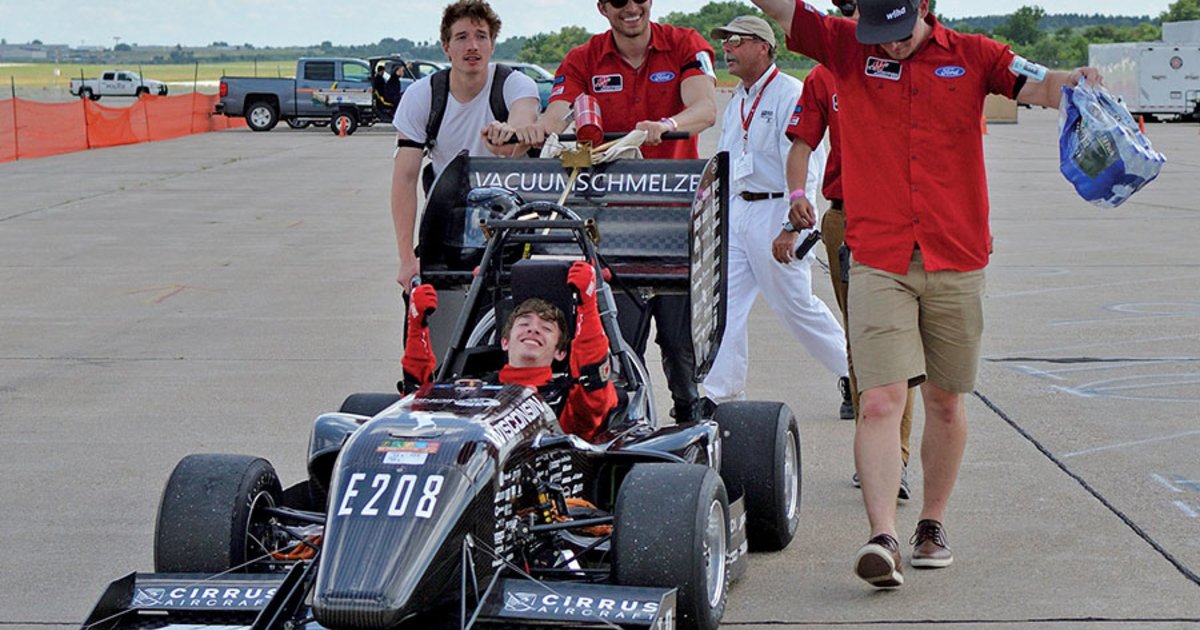
LAKEWOOD, Colo. — When they first came together during a college competition at the University of Wisconsin, three friends eschewed the school’s three decades of internal combustion racing history and instead formed its first electric racing team.
Their inexperience was no hindrance.
“We threw ourselves into the deep end,” said Max Liben. “It was, ‘All right, how do you make an electric vehicle?’ ”
From that formative turn in the 2017 Formula SAE electric competition, Liben and his cohorts, Jason Sylvestre and Eric Maciolek, quickly learned. As a result of that competition and another the following year, they founded their own company based on those underpinnings.
The startup aims to pack a lot of power into a lightweight package by developing high-performance integrated motor drives that combine the motor, inverter and gearbox into a single unit in a cohesive fashion they say is unlike anything else available today, offering lighter weight and more power density.
The use cases for such products cross industries. H3X foresees use in motorsports and marine applications, which have lower barriers to entry, for starters. Over the long term, its ambitions are squarely set in aviation and aerospace.
While electrification in the automotive industry is maturing, with a growing variety of EV models for sale and even more on the way, efforts to electrify the aviation industry as part of global decarbonization endeavors, by contrast, are much more fledgling.
For Liben, the company’s chief technology officer, that’s part of the appeal.
He realized automotive electrification systems were becoming commoditized during an internship at Tesla.
“The costs are really coming down,” he said. “We wanted to innovate and push the boundaries of what’s physically possible with currently available manufacturing technology and materials, because that is what is necessary to get electric flight off the ground.”
There’s no single leap that makes that possible, Liben says. Rather it’s incremental across-the-board iterations and improvements over today’s motors and inverters that allow for a ballpark power density of 3 to 4 kilowatts per kilogram.
With more current passing through the windings of their motors and better thermal performance in materials, H3X intends to triple that to 12 kW/kg.
Doing so might allow for more practical use of battery, fuel cell and hybrid systems throughout aviation. Right now, those systems more or less work for smaller general aviation aircraft and are capable of propelling travel of several hundred miles. In the embryonic electric-vertical-takeoff-and-landing, or eVTOL, segment, those distances are shorter, but the use cases and underlying business is promising.
While H3X may initially focus on ground-based applications, it sees aviation as its most sensible long-term market.
“There are trade-offs of cost versus performance, and the aviation world can afford those,” said Maciolek, the company’s COO.
Advancing electric powertrains for commercial aviation is a broad goal for government officials and industry executives pursuing net-zero carbon emissions strategies, particularly in 150- to 200-passenger commercial aircraft such as the Boeing 737.
That’s a goal of the Advanced Research Projects Agency-Energy, a division of the Department of Energy that funds boundary-pushing energy technologies. In 2019, ARPA-E started the Aviation-class Synergistically Cooled Electric-motors with iNtegrated Drives, or ASCEND, program with that in mind.
H3X formed as ARPA-E was closing the program’s first phase, so it did not participate. But it nonetheless designed its prototypes to meet the general framework of the program and further honed those designs while participating in startup accelerator Y Combinator from January to March 2021.
It was there that H3X started to raise its seed round, which stands at $6 million. And it started receiving letters of intent to buy the integrated motors; those nonbinding orders now total approximately $300 million over the next five years, the company said.
But it was at Wisconsin, building and racing electric vehicles, where their big ideas formed.
“What it allowed us to do was have an almost unlimited budget to develop what we wanted in college,” Maciolek said. “Max and Jason developed an entire electric powertrain, designed, manufactured and tested it in a year. That doesn’t happen in any industry without extensive resources. … That’s really where building this electric propulsion system started from scratch.”